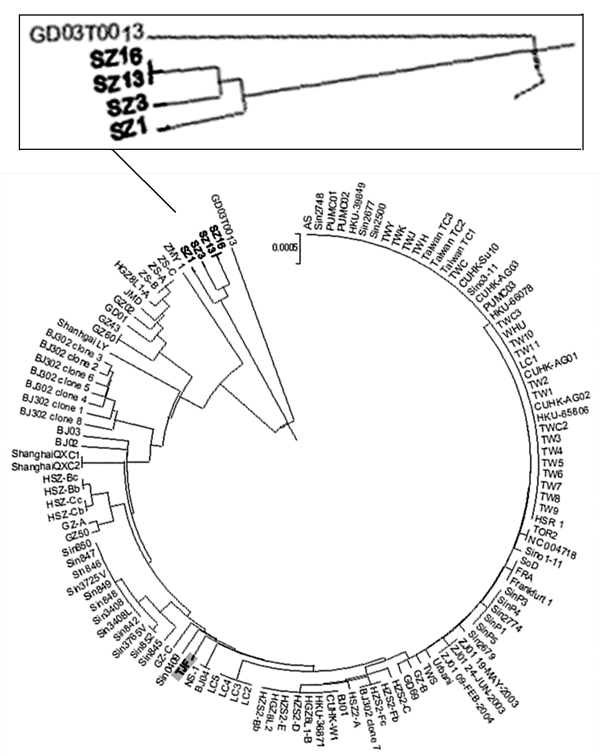Volume 11, Number 3—March 2005
Dispatch
SARS-associated Coronavirus Transmitted from Human to Pig
Figure 2

Figure 2. . . Phylogenetic analysis of severe acute respiratory syndrome–associated coronavirus S-gene. Nucleotide sequences of S genes (from 21491 to 25258 and 3768 bp in length) were compared. The result was displayed with MEGA-2 program and based on 125 complete S-gene sequences from GenBank.
Page created: April 25, 2012
Page updated: April 25, 2012
Page reviewed: April 25, 2012
The conclusions, findings, and opinions expressed by authors contributing to this journal do not necessarily reflect the official position of the U.S. Department of Health and Human Services, the Public Health Service, the Centers for Disease Control and Prevention, or the authors' affiliated institutions. Use of trade names is for identification only and does not imply endorsement by any of the groups named above.